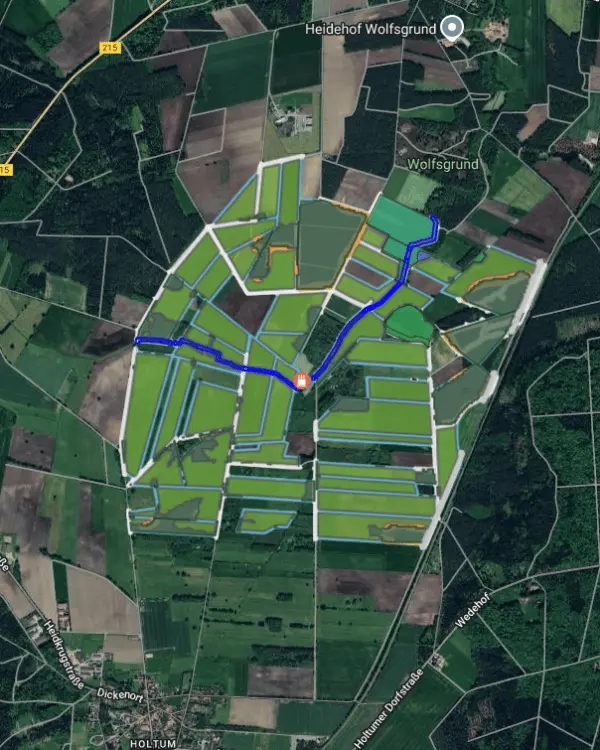
PVcase Prospect
Automate site selection and analysis with comprehensive integrated data for smarter decisions.

Solar engineering evolves rapidly. Companies often find themselves at a crossroads between innovation and operational challenges. New Leaf Energy, a pioneer in solar project development across the US, found itself in this position when expanding its projects from modest 5MW sites to sprawling 450 MW installations. As an EPC developer and consulting firm, the company grappled with labor-intensive site selection, slow design iterations, and the daunting task of yield optimization. That’s when they discovered PVcase, a platform that would transform an entire solar project development workflow. The integration of PVcase Prospect, PVcase Ground Mount, and PVcase Yield revolutionized New Leaf Energy’s cumbersome, multi-week process into a twice-shorter, seamless, and data-driven operation.
Prior to PVcase, New Leaf Energy encountered critical challenges in its solar development process:
With PVcase Prospect, New Leaf Energy was able to import terrain data in seconds — instead of manually pulling topographic maps.
“We rely on traditional site surveys for our smaller projects under 5 MW. But we needed something faster for large utility-scale projects — 50 MW and up. PVcase Prospect changed everything.” Phil Hofmeyer, design engineering manager at New Leaf Energy.
New Leaf Energy conducts detailed site surveys with 1-foot contour intervals for projects under 5 MW. Now, larger utility-scale projects exceeding 50 MW use topography data from PVcase Prospect or PVcase Ground Mount's Terrain feature.
Terrain is a key initial site screening factor, enabling the company to quickly establish the correct presets. This streamlines the project configuration approach in Ground Mount’s CAD environment, simplifying the design process, while PVcase Prospect’s comprehensive toolset ensures fast grid connection, efficient landowner communication, and seamless environmental integration.
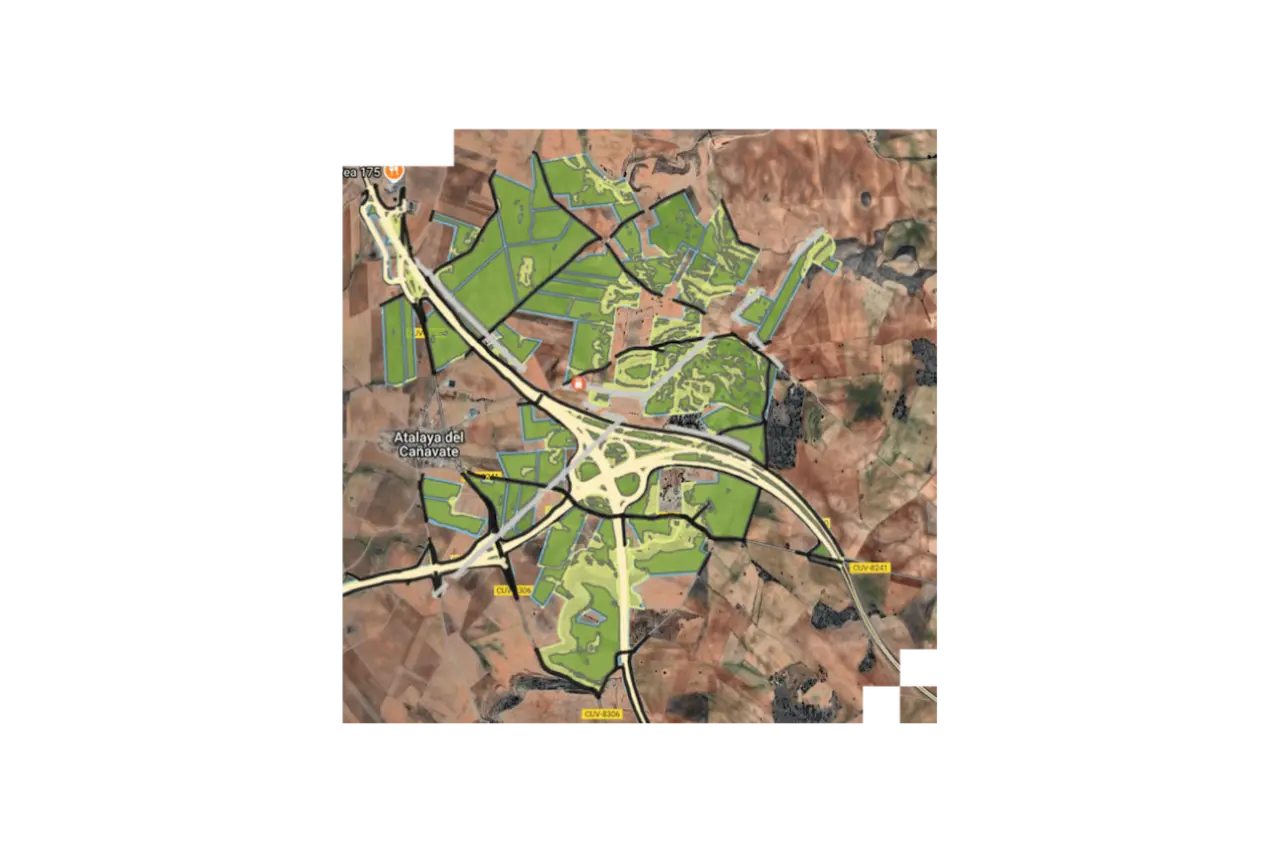
Projects completed 50% faster, frequent and convenient yield estimations, seamless 20-second switches from site selection to design, and fewer surprises down the road.
After a site successfully passes the initial screening, whether through a site survey or PVcase Prospect, New Leaf Energy seamlessly integrates the terrain and GIS data into PVcase Ground Mount within just 20 seconds. The company then kickstarts the design process with PVcase Ground Mount, which has proven to be a true game-changer.
Previously, choosing modules and racking configurations was a slow, manual process. Now, the Anza database allows the company to predefine PVcase Ground Mount settings files based on wind/snow loads, pricing, and market availability. Standardized presets enable instant, error-free module configuration for every engineer, saving countless hours of manual input.
Once the company has obtained topographical data from PVcase Prospect or a site survey, it utilizes the Terrain Mesh function. This tool is a significant time-saver, allowing the team to import data, create a terrain mesh, and build a slope table tailored to a specific racking vendor. It also ensures compliance with civil constraints across various site conditions. According to Phil Hofmeyer, the Terrain Mesh works seamlessly for early site screening without the need for detailed grading and pile settings adjustments.
Throughout their extensive experience in constructing comprehensive and large-scale solar projects, New Leaf Energy has faced a variety of unexpected challenges. One notable instance was when a landowner revealed that certain sections of a site were under a conservation easement. But the team didn’t panic. They imported the new boundary lines into PVcase Ground Mount, automatically explored five layout scenarios, and found a solution in minutes — ensuring project viability without penalizing the landowner for each crossing of these diversion areas.
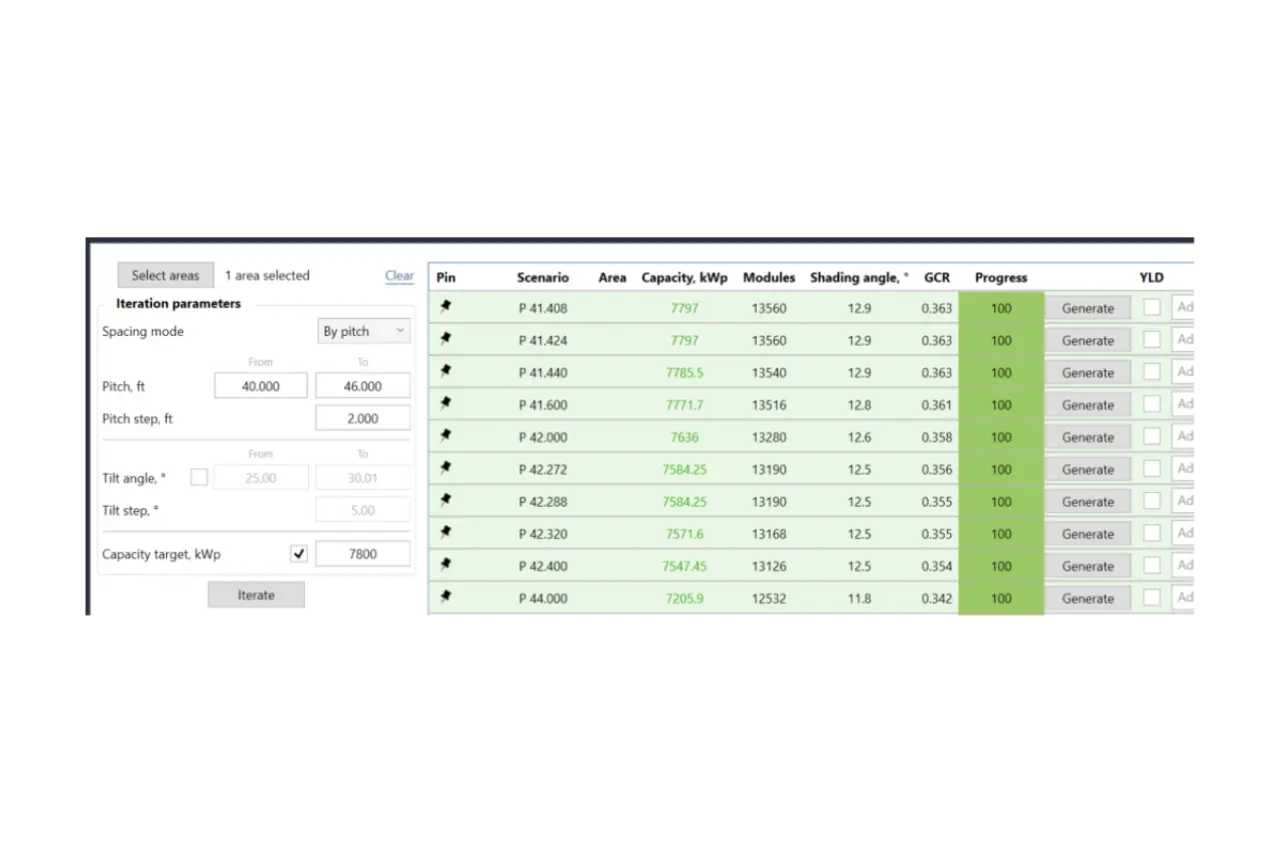
Furthermore, the team used Capacity Iteration to quickly estimate the PV area. They determined a 7.5MWp DC system was feasible but needed to choose between fixed-tilt and single-axis tracker systems. This decision was crucial due to its impact on total production and yield, requiring consideration of landowner preferences, local regulations (like height restrictions), and civil engineering concerns.
This iterative design process allowed New Leaf Energy’s project evaluation team to reassess site viability, especially after discovering additional constraints. The ability to quickly iterate layout, ground mount design, and yield calculations fed into the valuation model, confirming the site's financial viability.
Phil Hofmeyer, Design Engineering Manager at New Leaf Energy, noted that integrating PVcase's Capacity Iteration and yield export features dramatically reduced optimization time from two weeks to less than a day, enabling efficient optimization of early-stage designs and streamlining the entire process.
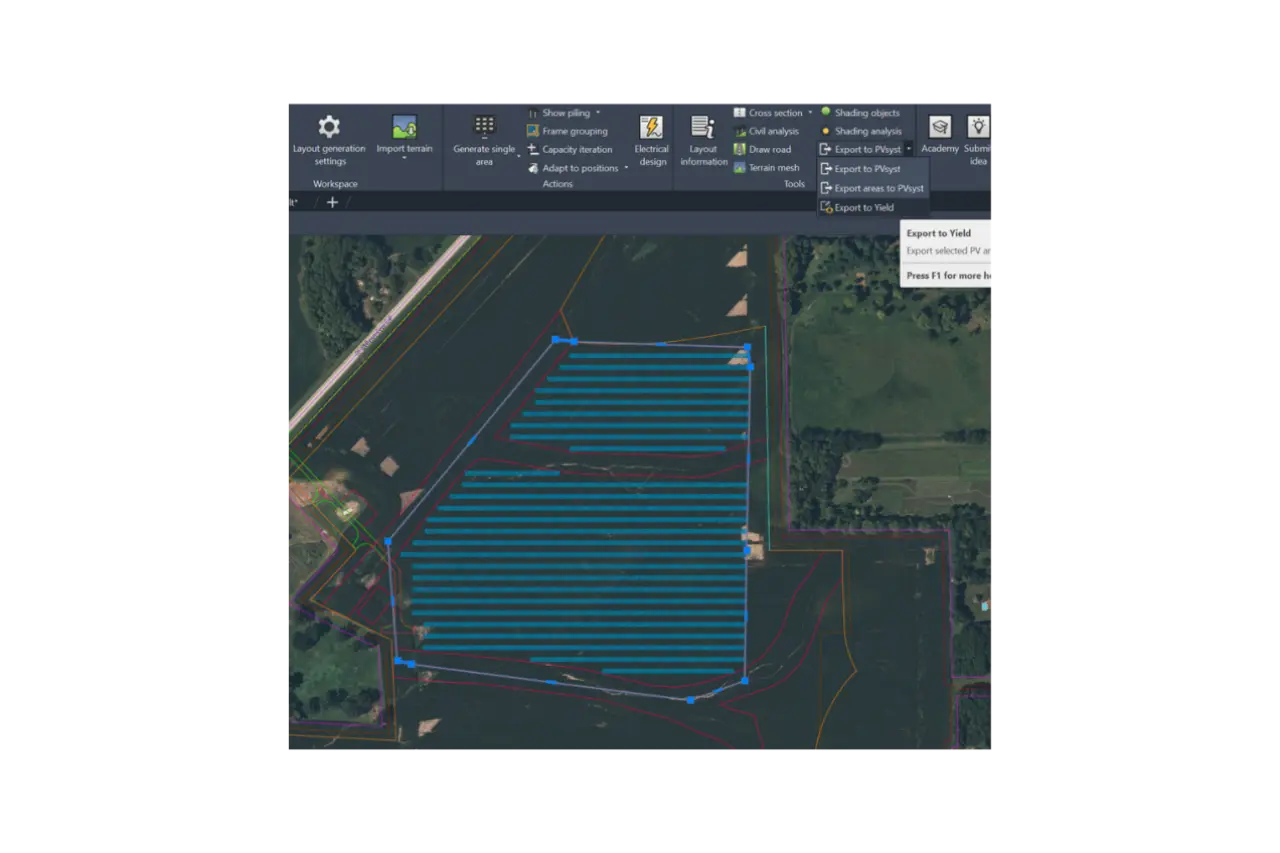
Once the design was finalized, the moment of truth came — energy yield calculations. Before PVcase, this process took two weeks and required exporting files between multiple platforms. Now, New Leaf Energy smoothly integrates the data from PVcase Ground Mount into PVcase Yield and the yield calculation process now takes 1-2 hours for a couple of runs per site.
PVcase Ground Mount integrates with PVcase Yield, significantly reducing project design time and saving days, even weeks, on individual designs.
Engineers can now run multiple yield models simultaneously, allowing for rapid comparison and optimization of different layouts, module types, and inverters. As Phil Hofmeyer noted, "I can run 4-5 different yield models simultaneously while working on layouts," enabling real-time design iteration.
PVcase Yield provides instant access to critical data, empowering New Leaf Energy to make informed decisions based on concrete insights rather than guesswork. This access to data-driven insights increases the optionality of final designs.
The ability to quickly generate 8760 production files rationalizes the project evaluation process and strengthens New Leaf Energy's proposals.
PVcase Yield has become an indispensable tool, accelerating solar project development, increasing design optionality, and ultimately delivering more value to New Leaf Energy's customers.
Adopting PVcase fundamentally reshaped New Leaf Energy's solar development, driving across-the-board enhancements:
New Leaf Energy is one of the leading developers of renewable energy and energy storage projects in the United States—both distributed generation and utility scale. Headquartered in Lowell, MA, with employees and projects spanning the country, New Leaf Energy was formed in 2022 out of Borrego’s market-leading solar and energy storage development business, which extends back to 1980. New Leaf Energy uses PVcase Prospect, PVcase Ground Mount and PVcase Yield to streamline their operations.

Automate site selection and analysis with comprehensive integrated data for smarter decisions.
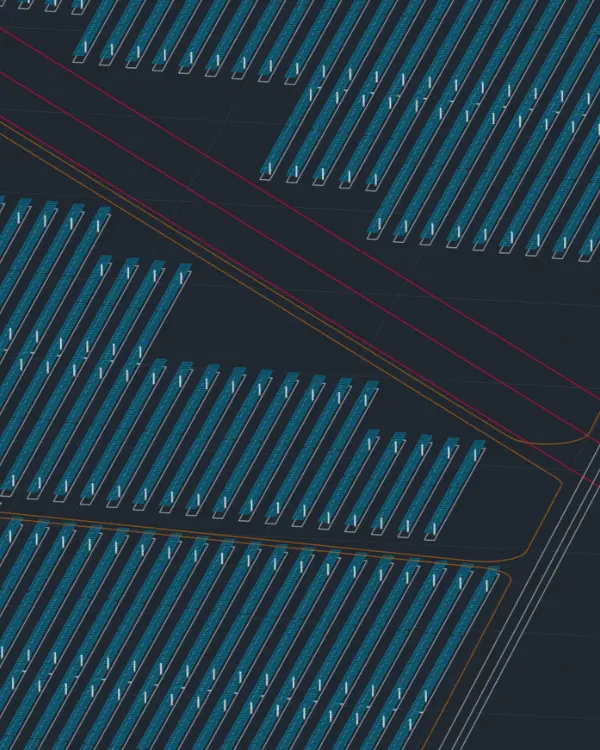
AutoCAD-driven software for faster, more accurate utility-scale solar design.
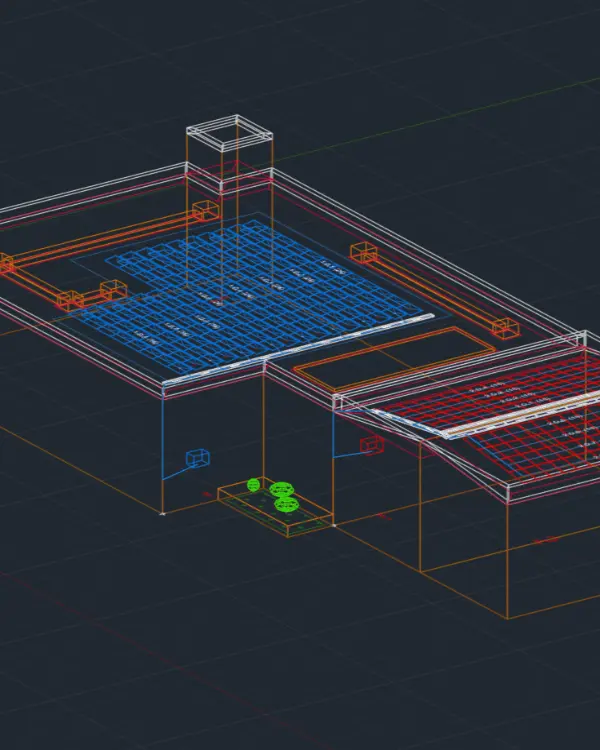
Maximize C&I rooftop solar design efficiency with advanced AutoCAD-driven software.
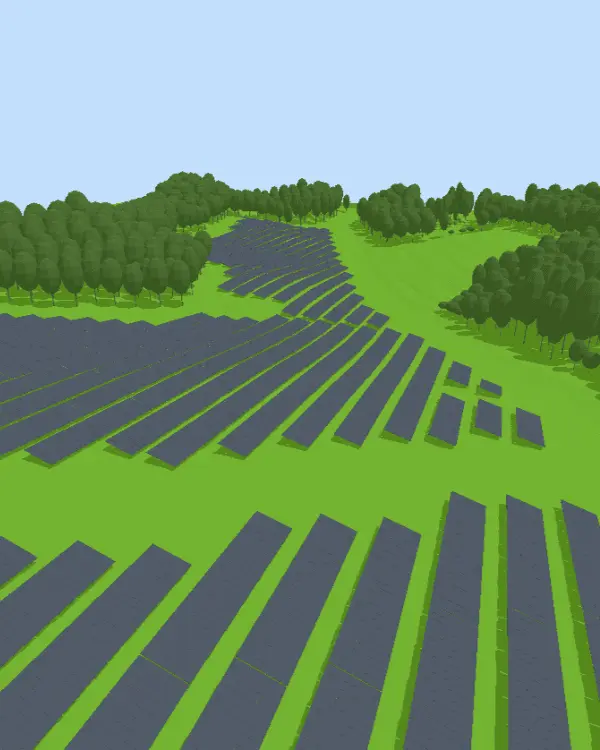
Precise and efficient energy modeling for optimal solar project performance.
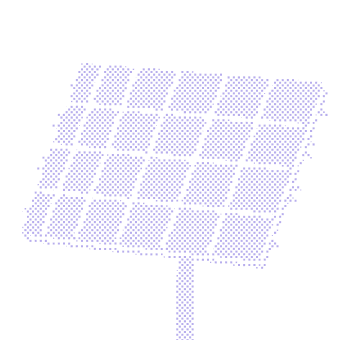

Turn complexity into clarity and confidently move your solar project forward